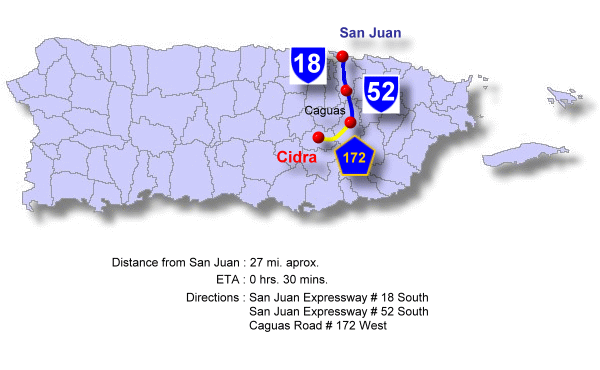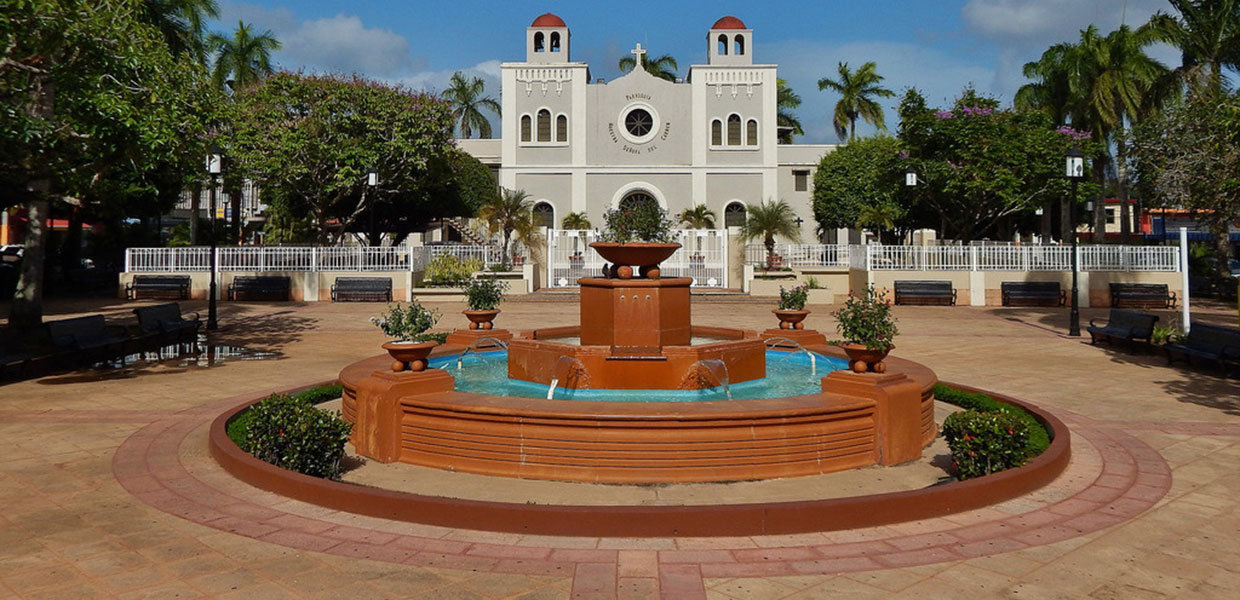
Cidra, Puerto Rico
City of the Eternal Spring
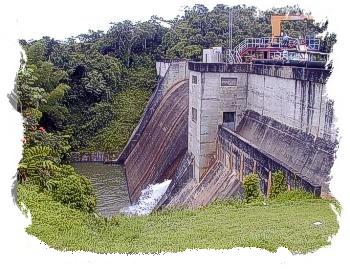
Cidra (SEE-drah) is known as the “City of Eternal Spring,” a name that reflects its cool and pleasant temperatures throughout much of the year. These climate conditions are directly related to its location in the mountainous region of central-eastern Puerto Rico. Its patron saint festivities, dedicated to Our Lady of Mount Carmel, are traditionally celebrated in July and represent one of the municipality’s most important cultural and religious events.
Cidra borders Comerío and Aguas Buenas to the north, Cayey to the south, Aibonito to the west, and Caguas to the east. Its inland location has significantly influenced its historical, social, and economic development, as well as its close relationship with the natural environment.
The municipality sits on a plateau surrounded by mountains, streams, and creeks, characteristic of the mountainous landscape of east-central Puerto Rico. Due to this elevation, Cidra enjoys a subtropical mountain climate, marked by moderate warmth and a cooler overall feel than coastal areas. Its terrain is classified—based on slope variation—as flat, gently sloping, moderately sloped, and steep, allowing for a balanced mix of urban areas, agricultural lands, and natural spaces.
Cidra is also known as the “Town of the Plain Pigeon,” due to the presence of the Columba inornata wetmorei, an endemic species of Puerto Rico that finds one of its main habitats in this region. This pigeon is distinguished by being the only one on the island with blue eyes, its larger size compared to the common pigeon, and its gray plumage with white-edged wings. It has reddish legs and a black beak. Although it is sometimes confused with the Eurasian collared dove or white-winged doves, the plain pigeon is a unique species and a natural symbol of great importance to the people of Cidra.
Foundation and Origin of the Name
Cidra was originally a ward of the municipality of Cayey until 1809, when its residents achieved its establishment as an independent municipality. There is no official documentation that definitively identifies who donated the land for the town’s establishment. However, historical references indicate that it was a former landowner who donated the property without requesting compensation.
Municipal documents related to this process are not preserved at City Hall, as they were destroyed during Hurricane San Ciriaco (1899). Despite this, local historical tradition attributes the land donation to Viviana Vázquez, recognized as a key figure in the municipality’s early development.
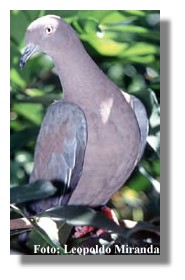
Cidra has an approximate land area of 36 square miles and is located in the humid mountains of central-eastern Puerto Rico. Its population has varied over time, remaining a mid-sized municipality within the island’s central region.
The name “Cidra” does not have Indo-Antillean roots. Its origin is Latin, derived from the term citrus, used to describe certain citrus fruits, including citron. Although there are no definitive historical records explaining the exact origin of the town’s name, it is believed to be related to the cultivation of citron trees in the area where the municipality is now located.
Historically, the town of Cidra has been identified by two principal nicknames: the “City of Eternal Spring,” referencing its cool climate and abundance of water resources, and the “Town of the Plain Pigeon,” due to the presence of the Columba inornata wetmorei, an endemic species closely associated with the municipality.
Location
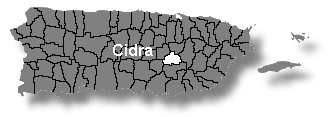 The municipality of Cidra is located in the central-eastern region of Puerto Rico, within the island’s mountainous interior. Its geographic position places it as a link between the Cordillera Central and the eastern municipalities.
The municipality of Cidra is located in the central-eastern region of Puerto Rico, within the island’s mountainous interior. Its geographic position places it as a link between the Cordillera Central and the eastern municipalities.
Cidra borders Comerío and Aguas Buenas to the north, Cayey to the south, Aibonito to the west, and Caguas to the east. This location has influenced its urban development, climate, and historical ties with neighboring towns.
Land Area
94 square kilometers (36.1 square miles)
Population
40,389 residents (2020 Census)
Population Density:
430 residents per square kilometer
1,115 residents per square mile
The highest population concentration is found in the urban center and in neighborhoods near major access roads.
Demonym
Cidreños
Nicknames
- City of Eternal Spring
- own of the Plain Pigeon
Wards: Cidra, Puerto Rico
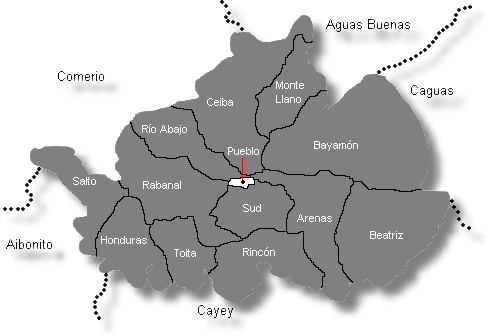
| Census 2020: Population by Wards - Cidra |
Habitants |
| Arenas | 6,239 |
| Bayamón | 10,730 |
| Beatriz | 3,168 |
| Ceiba | 3,408 |
| Cidra Pueblo | 864 |
| Honduras | 1,738 |
| Monte Llano | 668 |
| Rabanal | 4,277 |
| Rincón | 4,286 |
| Río Abajo | 1,214 |
| Salto | 36 |
| Sud | 3,578 |
| Toíta | 996 |
| Total | 40,389 |
Source: Censo 2020
Patron Saint
Our Lady of Mount Carmel
Our Lady of Mount Carmel Parish
Founded: 1895
Mailing Address: P.O. Box 359, Cidra, PR 00739
Phone: (787) 739-2406
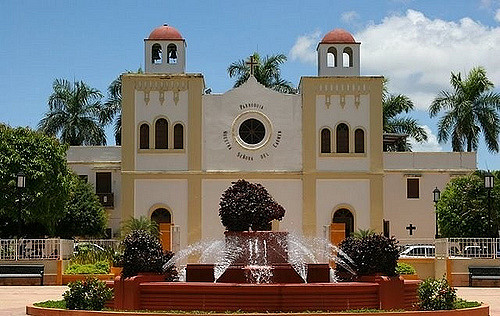
The parish serves as the primary religious center of the municipality and is the focal point of the patron saint festivities held in July, as well as other liturgical and community activities throughout the year.
Municipal Government
The municipality of Cidra operates under an autonomous municipal government, led by a mayor and a municipal legislature elected by popular vote. The local administration is responsible for essential services, urban planning, infrastructure maintenance, culture, sports, and community programs.
Cidra City Hall (Casa Alcaldía) serves as the municipality’s administrative center and houses the main government offices.
Economy and Industries
Cidra’s economy has historically been based on a combination of manufacturing and agriculture. The main economic activities include:
- Manufacturing, particularly in the pharmaceutical and garment sectors
- Agriculture, with an emphasis on citrus fruits and other minor crops
These industries have contributed to the municipality’s economic development and employment generation in Puerto Rico’s central region.
Income and Labor Activity
Rather than relying on outdated historical figures, Cidra’s current economic profile is best described as a municipality with a diverse labor base, where employment in manufacturing, commerce, services, and agriculture coexists, both within the municipality and in nearby towns in the central and metropolitan regions.
Transportation and Access
Cidra is connected to neighboring municipalities through a network of state and municipal roads that provide access to the metropolitan area and the island’s central region. The municipality relies primarily on private transportation, although limited public transportation routes and shared transit services are available.
Its inland location allows for relatively short travel distances to towns such as Caguas, Cayey, and Aibonito.
Sports and Recreation
Sports and recreation play an important role in community life in Cidra. The municipality has sports facilities, recreational parks, and areas designated for physical activities and community events.
The most commonly practiced sports include baseball, basketball, and volleyball, along with family-oriented recreational activities organized by the municipality and local organizations.
Culture and Traditions
Cidra maintains a strong cultural identity rooted in its religious, artistic, and community traditions. Festivals, theater, music, and local cultural expressions reflect the municipality’s history and the pride of its residents.
Venues such as the Teatro Iberia, along with activities organized by local cultural groups, contribute to the preservation and promotion of Cidra’s cultural life.
Topography
Cidra’s territory lies at an elevation ranging approximately between 200 and 700 meters above sea level (656 to 2,296 feet), placing it within the mountainous landscape of east-central Puerto Rico.
The highest hills are primarily located in the Rabanal and Honduras neighborhoods. In Rabanal, the Almirante and Viento Caliente hills stand out, while Plana and Gordo are prominent in Honduras. The flattest areas of the municipality are found near the Cidra Reservoir, which has supported urban and agricultural development in that zone.
Hydrography
Cidra forms part of the Río de la Plata watershed, the longest river in Puerto Rico. Its hydrological system includes tributaries such as the Río Arroyata, the Río Bayamón, and several creeks, including Caña Bocana and Galindo.
A key feature of the municipality’s hydrography is the Cidra Reservoir, with an approximate surface area of 3 square kilometers, recognized as the smallest reservoir on the island. This body of water plays a fundamental role in potable water supply and water resource management.
Climate
Cidra has a humid subtropical mountain climate, characterized by moderate temperatures and a cooler overall feel compared to coastal areas.
- Average annual temperature: 81 °F
- Average annual rainfall: 63 inches
These climatic conditions support lush vegetation, agricultural activity, and a distinctive environmental quality throughout the municipality.
Flag
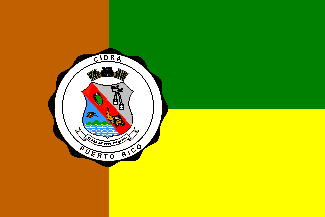 The flag of the municipality of Cidra was officially approved through Ordinance No. 8, Series 1975–1976, by the Honorable Municipal Assembly on September 25, 1975. That same ordinance also approved the municipal coat of arms and seal.
The flag of the municipality of Cidra was officially approved through Ordinance No. 8, Series 1975–1976, by the Honorable Municipal Assembly on September 25, 1975. That same ordinance also approved the municipal coat of arms and seal.
The design was developed with professional heraldic guidance from Prof. J. J. Santa Pinter, at the request of the municipality’s Cultural Center. The flag is of standard size (3 feet by 5 feet) and is composed of two horizontal stripes and one vertical stripe along the hoist:
- Upper horizontal stripe: green
- Lower horizontal stripe: gold
- Vertical stripe at the hoist: brown
The municipal seal appears centered, visually uniting the three stripes.
The green color symbolizes the municipality’s evergreen landscape and directly references its nickname, the “City of Eternal Spring.” The gold color represents the agricultural, aquatic, and spiritual richness of the region and its people. The brown color alludes to Our Lady of Mount Carmel, the town’s patron saint, and to the plain pigeon, an emblematic species whose primary habitat is found in the Cidra area.
Coat Of Arms
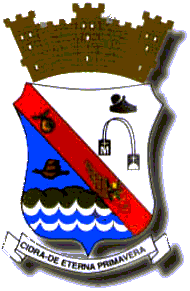 The coat of arms of the municipality of Cidra was approved in the 1970s by the Honorable Municipal Assembly. Its heraldic design incorporates historical, religious, natural, and geographic elements that represent the identity of the town.
The coat of arms of the municipality of Cidra was approved in the 1970s by the Honorable Municipal Assembly. Its heraldic design incorporates historical, religious, natural, and geographic elements that represent the identity of the town.
A diagonal red band crosses the shield, symbolizing the municipality’s name, the patriotism of its residents, and their daily struggles. This band also refers to the martyrdom of Saint John of Nepomuk, one of the municipality’s patron saints.
On the red band appear a citron and a golden cornucopia with fruits in natural colors, symbolizing the fertility of the land and the production of minor crops, an activity historically important to Cidra.
In the upper right portion of the shield, a scapular represents Our Lady of Mount Carmel, the municipality’s patron saint, alongside a black mitre symbolizing Saint John of Nepomuk, bishop and martyr. In the lower left section, set against a blue background, appears a brown plain pigeon, an endemic species that nests in the area and serves as a natural symbol of the municipality.
The pigeon flies over a three-peaked mountain, representing Cidra’s location in the Cordillera Central, while silver and blue waves symbolize the municipality’s water resources. The shield is crowned with a three-towered mural crown, a traditional emblem of municipalities.
Points of Interest
Cidra features several natural, historical, and cultural sites that form part of the municipality’s identity and the daily life of its residents.
- Ceiba Tree
An emblematic tree associated with tradition, history, and Cidra’s cultural identity. - Cidra Lake
Also known as the Cidra Reservoir, it is a body of water essential to the municipality’s water system and a natural landmark within the local landscape. - Our Lady of Mount Carmel Parish
The municipality’s main Catholic church and the center of religious celebrations, including the patron saint festivities. - Puente de las Hamacas (Hammocks Bridge)
A historic structure recognized for its architectural value and its importance in the municipality’s transportation development. - Teatro Iberia
A cultural venue dedicated to the performing arts, film, and community activities, considered one of Cidra’s principal cultural centers.
Events
Throughout the year, Cidra celebrates various cultural, religious, and artistic events that strengthen community ties and preserve local traditions.
- Patron Saint Festivities – July
A celebration dedicated to Our Lady of Mount Carmel, featuring religious activities, music, crafts, and family-oriented events. - Plain Pigeon Festival – November
A cultural event highlighting the ecological and symbolic importance of the plain pigeon, an endemic species associated with the municipality. - Myrna Vázquez Díaz Week – February
Cultural and artistic activities honoring the distinguished Cidra-born actress Myrna Vázquez Díaz.
Notable Figures
Cidra has been the birthplace of important individuals who have contributed to Puerto Rico’s cultural, athletic, literary, and historical development.
- Luis López Santos – Athlete (baseball)
- Nicolás Ortiz Colón – Writer
- Víctor Serrano – Writer
- Myrna Vázquez Díaz – Actress
- Pedro Vázquez Urbina – Writer
- Viviana Vázquez – Benefactor; donated land for the founding of the town
- rancisco María Zenón – Journalist and politician
Education
Cidra has an educational system composed of public and private schools serving the elementary, middle, and high school levels. These institutions are part of the Puerto Rico Department of Education, as well as the private education sector.
Many students from the municipality also pursue higher education at institutions located in nearby towns within the central and metropolitan regions, taking advantage of Cidra’s regional connectivity.
Public Schools sorted by educational.
Caguas Region
Cidra District
| Name | Nivel | Telephone | Address |
| Elementary/b> | |||
| CEIBA I | K-6 | (787) 739-4360 | PO Box 11998 SUITE 1285, P.R. 00737-0000 |
| MONTELLANO | K-6 | (787) 739-0611 | PO Box 11998 SUITE 1285, P.R. 00737-0000 |
| CIPRIAN CASTRODAD | K-6 | (787) 739-3744 | RR 1 Box 2192, P.R. 00739-9604 |
| EDUCACIÓN BILINGÜE | K-7 | (787) 747-0385 | PO Box 650, P.R. 00739-0000 |
| ELEMENTAL URBANA | K-3 | (787) 739-5623 | PO Box 1245, P.R. 00739-0000 |
| LUIS MUÑOZ RIVERA | 4-6 | (787) 739-2761 | PO Box 650, P.R. 00739-0000 |
| LUIS MUÑOZ RIVERA Y ANEXO | K-3 | (787) 739-4666 | PO Box 650, P.R. 00739-0000 |
| SANTA CLARA | K-6 | (787) 739-6626 | PO Box 650, P.R. 00739-0000 |
| Intermediate | |||
| JESÚS T PIÑERO | 7-8 | (787) 739-2481 | PO Box 650, P.R. 00739-0000 |
| Secondary | |||
| LUIS MUÑOZ IGLESIAS | 9-10 | (787) 739-2535 | PO Box 650, P.R. 00739-0000 |
| SU CERTENEJAS II | K-9 | (787) 739-6195 | PO Box 6400-1186, P.R. 00737-0000 |
| SU PEDRO DÍAZ FONSECA | K-9 | (787) 738-3584 | PO Box 371237, P.R. 00737-0000 |
| CLEMENCIA MELÉNDEZ | K-9 | (787) 739-8913 | PO Box 650, P.R. 00739-0000 |
| SU JUAN STUBBE | K-9 | (787) 739-8545 | PO Box 650, P.R. 00739-0000 |
| SU PEDRO M DOMINICCI | K-9 | (787) 739-6130 | PO Box 845, P.R. 00739-0845 |
| High School | |||
| ANA J CANDELAS | 10-12 | (787) 739-8070 | PO Box 650, P.R. 00739-0000 |
| SUPERIOR VOCACIONAL | 10-12 | (787) 739-3011 | PO Box 1817, P.R. 00739-0000 |
Himno:
By Felito Félix
Del corazón de Puerto Rico nació Cidra
bautizado por un sol de amanecer
y arrullado por las brisas de Borinquen
con el aroma de las flores del Edén.
Yo me siento orgulloso de mi pueblo
de su gente, de sus montañas y praderas
y lo grito con orgullo donde quiera.
¡Soy del pueblo de la eterna primavera
soy cidreño, borinqueño
y orgulloso de ser buen puertorriqueño!
¡Soy cidreño, borinqueño
y lo grito con orgullo y con empeño!
¡Ser cidreño es un orgullo
una bendición de Dios!
¡Puertorriqueño de cepa cidreño de corazón!
La paloma sabanera se anidó en su corazón.
Ser cidreño es un orgullo
cidreño, cidreño, cidreño de corazón.
¡Ser cidreño es un orgullo
una bendición de Dios!
Soy de Los Bravos de Cidra,
cidreño, cidreño, cidreño de corazón.
Frequently Asked Questions About Cidra, Puerto Rico
- Lake Cidra (Embalse de Cidra), used for walking, picnics, and scenic views
- Mountainous and forested areas ideal for nature appreciation
- Rivers and streams flowing through the municipality’s valleys
- Areas suitable for birdwatching and landscape photography
- The richness of native biodiversity
- The ecological value of rural and mountainous areas
- The importance of environmental education and species protection
- Walking and light exercise
- Family outings and picnics
- Nature observation
- Relaxation near bodies of water
- Walks around the reservoir and green areas
- Family outings and picnics
- Recreational fishing in permitted areas
- Cultural and community activities
- Visits to town plazas and local businesses
- Patron Saint Festivals, featuring religious observances, music, fairs, food, and community events
- Cultural activities highlighting music, traditions, and local crafts
- The central town plaza and parish church
- Monuments and commemorative public spaces
- Areas and structures reflecting the municipality’s historical development
- Its mild mountain climate
- Its reservoirs, rivers, and natural landscapes
- Its biodiversity and ecological value
- Its active community life and cultural traditions

